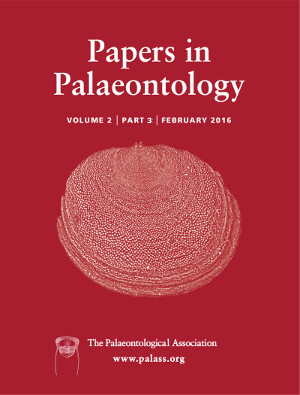Reg. Charity No. 1168330

The Indian subcontinent remains one of the few regions of the world that lacks an established biostratigraphical framework for the Cambrian. As a step towards realizing this goal, this revision of reportedly Cambrian material previously described as hyolith from the Himalaya permits the recognition of Sulcavitus wynnei (Waagen) from informal Cambrian Stage 4 and possibly as low as upper Stage 3, and Nganki namak sp. nov. from the lower part of informal Cambrian Stage 4 in the Khussak Formation of the sub‐Himalayan Salt Range of Pakistan, and aff. Nitoricornus sp. from informal Cambrian Stage 5 in the Tethyan Himalayan Parahio Formation of the Parahio Valley, northern India. Other previously reported regional hyolith material is either non‐hyolith, questionably assigned to the group, indeterminate or not available. The range of S. wynnei may have local biostratigraphical utility in the late early Cambrian, and the occurrence of the genus Nganki, previously known only from Australia, is consistent with other faunal evidence of biogeographical linkage between India and Australia at that time. Revision of these hyoliths completes a synoptic review of previously described and newly recovered trilobites, brachiopods and hyoliths from the Cambrian of the Indian subcontinent.